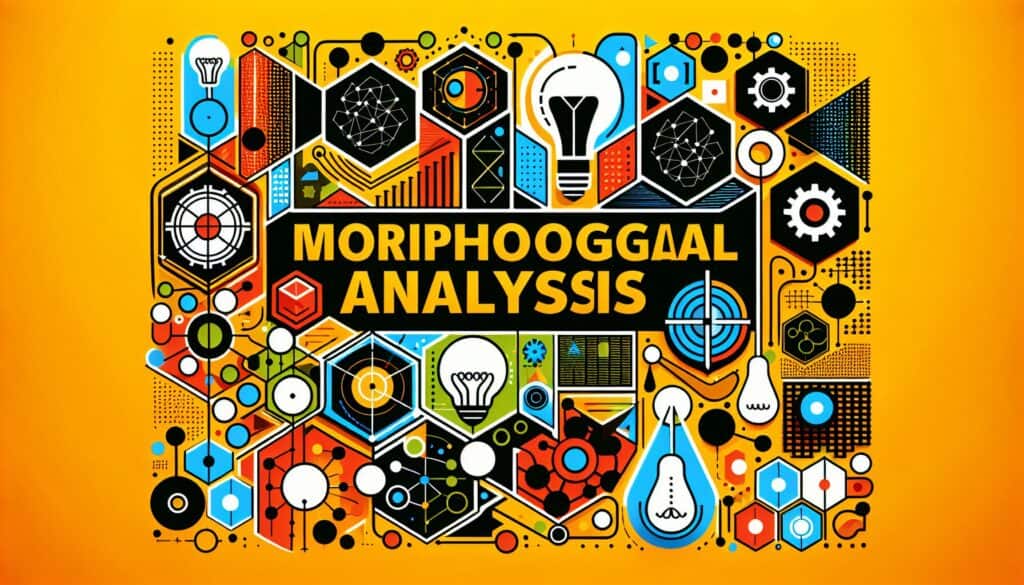A problem-solving and ideation technique that involves breaking down a complex problem or system into its fundamental parameters or dimensions, then generating all possible combinations of these to find novel solutions.
- Methodologies: Customers & Marketing, Ideation, Product Design
Morphological Analysis

Morphological Analysis
- Creativity, Design for Additive Manufacturing (DfAM), Design Optimization, Design Thinking, Ideation, Innovation, Problem Solving Techniques, Systems Modeling Language (SysML), Value Engineering (VE)
Objective:
How it’s used:
- Identifies the key features or functions of a product/problem. For each feature, a list of possible variations or implementations is generated. Combinations of these variations are then explored systematically.
Pros
- Provides a systematic way to explore a wide range of potential solutions or configurations; can lead to innovative and unexpected ideas; helps ensure all possibilities are considered.
Cons
- Can become very complex and generate an overwhelming number of combinations if there are many parameters or variations; evaluating all combinations can be impractical; requires clear definition of parameters.
Categories:
- Ideation, Problem Solving, Product Design
Best for:
- Systematically structuring and exploring all possible solutions to a complex problem by breaking it into its core dimensions and generating combinations.
Morphological Analysis is frequently utilized in industries such as automotive design, aerospace engineering, and consumer electronics, where the intricacies of product features and functions necessitate thorough examination. During the conceptual phase of projects, teams typically comprising engineers, designers, and product managers initiate this methodology to dissect the multifaceted nature of challenges they face. By identifying the fundamental features of a product or problem, such as size, material, or functionality, and generating variations for each, teams can explore a vast array of combinations that might lead to groundbreaking solutions. For example, in automotive design, variations might include different types of propulsion systems (electric, hybrid, traditional combustion) combined with varied body styles (sedan, SUV, coupe), which can yield numerous innovative vehicle concepts. This structured exploration fosters creativity, facilitating the emergence of previously unconsidered solutions that enhance product appeal while addressing user needs or environmental concerns. Workshops and collaborative sessions are often organized around this methodology, allowing diverse input and interdisciplinary cooperation, which not only broadens the exploration process but also aligns the team’s focus on achievable, coherent outcomes.
Key steps of this methodology
- Identify the core dimensions of the problem or product.
- Define key features or functions related to each dimension.
- Generate a comprehensive list of possible variations for each feature.
- Create a morphological matrix to combine variations systematically.
- Explore different configurations by analyzing the matrix.
- Select and evaluate promising combinations for feasibility and relevance.
- Refine configurations based on feedback and insights gained.
- Document the selected combinations for further development and prototyping.
Pro Tips
- Utilize clustering techniques during the variation generation phase to identify synergies among features, enabling stronger combinations that may not be immediately apparent.
- Integrate feedback loops from stakeholders at various stages of the analysis to validate and refine the combinations, ensuring relevance and applicability to real-world scenarios.
- Employ simulation tools to visualize and test the feasibility of the selected combinations, allowing for quicker iterations and adjustments before moving to physical prototypes.
To read and compare several methodologies, we recommend the
> Extensive Methodologies Repository <
together with the 400+ other methodologies.
Your comments on this methodology or additional info are welcome on the comment section below ↓ , so as any engineering-related ideas or links.
Historical Context
1949
1950
1950
1960
1960
1960
1960
1940
1950
1950
1958
1960
1960
1960
1960
(if date is unknown or not relevant, e.g. "fluid mechanics", a rounded estimation of its notable emergence is provided)















Related Posts
Musculoskeletal Discomfort Questionnaires
Multivariate Testing (MVT)
Multiple Regression Analysis
Motion Capture Systems
MoSCoW Method
Mood’s Median Test